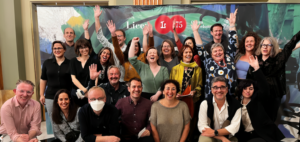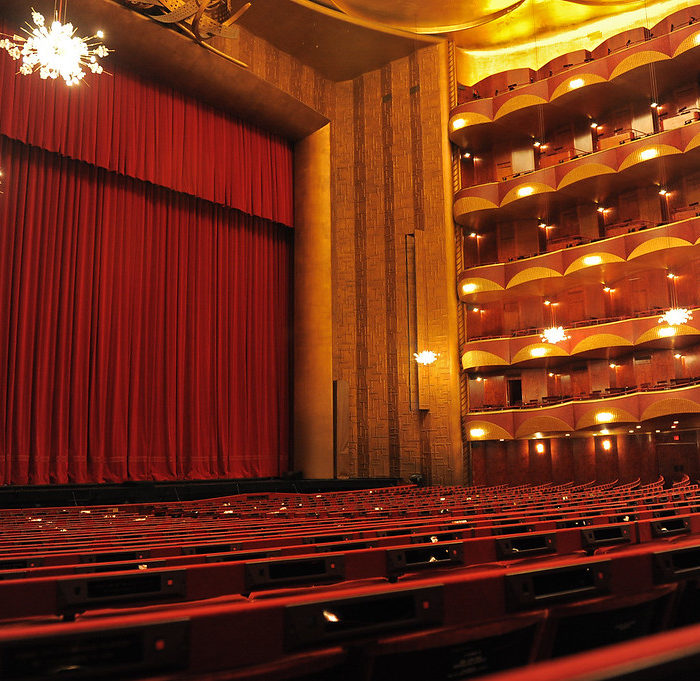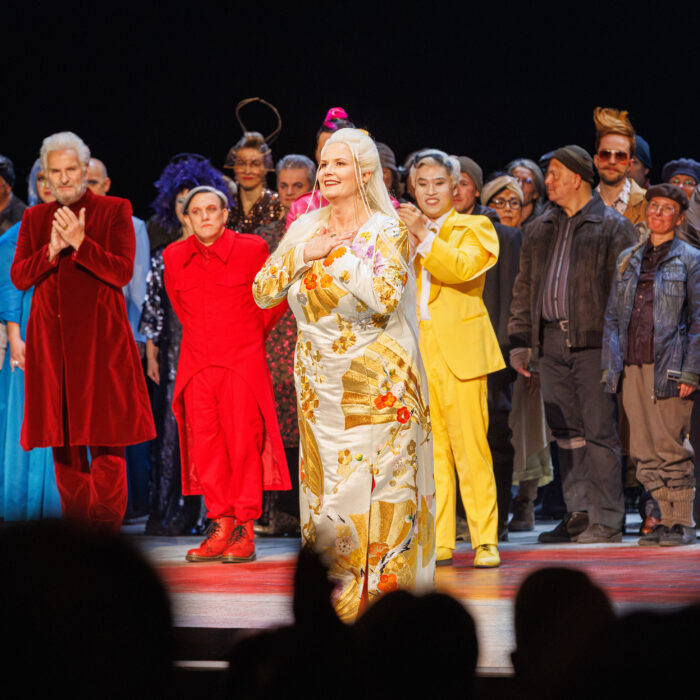
The New Face Of Opera in ‘The Traction Project’
By John Vandevert(Photo credit: François Matarasso)
When you think of opera, one imagines a beautifully finished product, usually disconnected from the labor involved in its creation. But what would happen if the labor to produce opera was just as foregrounded as the result of that labor? This question has been taken up in many forms over the last six to seven decades.
From John Cage’s experiments, “Europeras“, Stockhausen’s spiritual Wagernianism “Licht“ series, and John Adam’s meta-narrative imaginings, “The Death of Klinghoffer“ and “Nixon In China“. To the neo-grand opera marvels of Phillip Glass, “Akhnaten“, and what could be described as the post-opera operas of virtual reality, “Current Rising“, opera has never been just about what is on the stage. For both informed and new listeners alike, what happens on the stage is only a part of the experience of opera, and if we can understand as viewers what happens off the stage, then what happens on the stage is that much more powerful. Hence, the idea of foregrounding the process in art (i.e., process art) is a powerful reminder of the very real human work behind creativity. Opera doesn’t just poof into existence but is the result of many hours of work by as many, if not more, people in various positions.
One such process-art project making waves in contemporary opera is the EU-funded initiative, “The Traction Project,“ begun just four years ago in 2020 after having received funding from the “Horizon 2020 Research and Innovation Programme.” Although only going for two years, this has produced three operas of great importance. Via a large-scale collaboration between business, philanthropy, and performance, a community of thinkers came together in dedication towards reconceptualizing opera in the European space. Many of the team members of “The Traction Project”, including community art researcher François Matarasso author of “The Restless Art”, (2019) and a host of theaters and companies, from Gran Teatre del Liceu to Virtual Reality Ireland, represented a fresh face of opera which didn’t shy away from technology but integrates opera with its unavoidably human face to bring in a new generation of audience members and participants in the operatic experience which undermines old hierarchies of performance.
The three operas at the heart of “The Trevor Project” (“La Gata Perduda“ in Barcelona, “O Tempo“ in Portugal, and “Out of The Ordinary“ in Ireland) were all experiments in the creation of opera from a community-first perspective, and while the project is finished, the infrastructure left behind lives on. One may ask, “Why is community participation a vital part of opera’s future?” The importance lies in seeing one’s experiences represented not only on the operatic stage but through opera itself, understanding what opera does by becoming one with opera rather than continuing the binary of the composer, performer, and listener. As they write, “Through co-creation—the collaboration of professional and non-professional artists—opera discovers new ideas, new stories, new performers and ultimately new advocates.”
Ultimately, what opera becomes is up to us but what opera is may also be up to us and that we have the power to change at any time by seeing the world as the opera stage, our neighbor as a performer, and our life as the libretto.
Watch
Categories
Special Features

